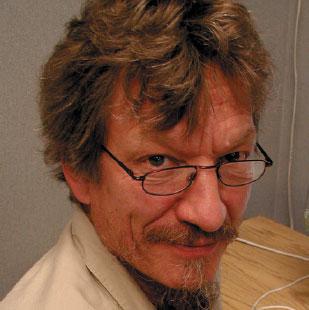Deeper Cooperative Visions

With a boost from the International Year of Cooperatives, the potential of cooperatives in addressing critical social and economic needs is gaining recognition—although perhaps not as rapidly as those needs themselves are growing. Reinforcing deep social problems resulting from concentrated wealth and the politics that this concentration drives, most public personalities argue for greater debt and overall growth that is driven by private lenders. Cooperatives swim against this tide and offer community-based enterprise and economies that are more stable, more fair, and more democratic. (For a succinct critique of mainstream assumptions, see Herman Daly, www.steadystate.org/eight-fallacies-about-growth.)
In this issue, readers will find an unusual collection grouped under the theme, “deeper co-op visions”—a cross-sector cooperative “think tank” as well as a public history project at a food co-op and a recent merger of two retail co-ops. How do these reflect our theme?
The exploration of cooperative vision is a leading element of a co-op think tank in Austin, Texas. Described by Rose Marie Klee of Wheatsville Co-op, the project includes a diverse set of participants and is encouraging local co-ops to break out of their isolation and collaborate in building a stronger cooperative future.
People also need to know how we got to where we are. In Wilmington, N.C., a public history exhibit in the store, planned and carried out with the local university, was designed to commemorate a co-op’s first 30 years. The project, summarized by Craig Harris of Tidal Creek Cooperative Food Market, illustrates co-op collaboration and preserves cultural history that is often lost. Acknowledging and sharing that history can help cooperators be more confident in visioning the future.
In the retail co-op merger, reported by Michelle Schry of People’s Food Co-op, the surface story is one of overcoming obstacles on the path toward a larger cooperative vision. The deeper story is the embrace of that vision by the members and leadership of both co-ops. We all want stronger cooperatives: as marketplace leaders, as employers, and as community collaborators. The merger suggests that achieving a larger vision sometimes requires us to expand our historic identity by joining with another co-op, one that has its own history but that is based on the same cooperative values and principles.
Note also that during a very early point in the discussions that led to the merger proposal, a parallel example of a successful food co-op merger already existed in another region of the country and was offered as inspiration. Cooperatives are stronger locally by being more networked and organized nationally and internationally.
In building its foundation, as well as growing its vision, a cooperative must continually seek and involve member-owners. Jake Schlachter of Food Co-op Initiative discusses how members themselves can recruit new members. This home-based technique was initially intended for startups, but it proves to be at least as relevant among co-ops that are still working on member recruitment and involvement after 30 or 40 years.
Finally, for a well-informed local/global perspective, I recommend a recent discussion of cooperatives’ potential to address issues of economy, fairness, and democracy: “The cooperative turn: building the right kind of autonomy,” by Robin Murray (posted at www.opendemocracy.net from the original at www.resurgence.net). Murray’s commentary provides many examples of co-op enterprise—from U.K. and Japanese consumer co-ops to German co-op banks and Spain’s worker-owned Mondragon complex—and concludes in this manner:
“In the 20th century, the joint stock company drove the revolution in mass production. Scale ruled and clubs were trumps. But the zeitgeist is now moving back towards human-scale and cooperation. The 21st century has seen a return to the micro, to self-governing units networked together as part of larger, -complex systems.
“Cooperatives have been experimenting with such collaborative systems for some 150 years. There is a wealth of experience of what does and doesn’t work, of the pitfalls but also the extraordinary economic and human value they generate when they get it right. They have been able to reconnect that which has become separated: the personal and the social, the consumer and the producer, finance and industry, the enterprise and its community, and at their best, in the spirit of William Morris, the head, the heart and the hand.”







